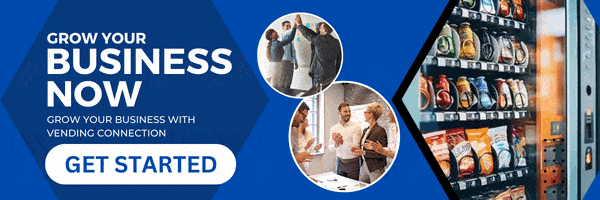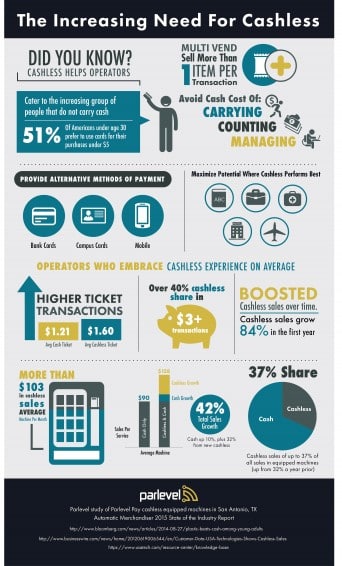We know that accepting cashless payments is a must to appeal to younger Americans, but what are the tangible benefits of installing a vending card reader? We looked at the data to see just how beneficial cashless vending really is. The results are substantial: operators who embrace cashless have average ticket transactions of $1.60 – that is nearly 40 cents higher than their cash counterparts. The reason? Consumers don’t feel the same pain of spending when they use cards over cash. After all, swiping a card takes less thought than physically giving away paper money.
Furthermore, in a study of machines equipped with Parlevel Pay cashless readers in San Antonio, Texas, average machine sales per service increased 42% when a vending card reader was installed. 32% of the increase came from cashless payments while 10% of the increase was attributed to growing cash sales. Amazingly, cashless did not cannibalize cash sales, but rather increased them. Since there are now more ways to pay at the machine, more people are using the vending machine – whether they have cash or not, they know the machine will accommodate them. Furthermore, cashless technology can increase a machine’s image of reliability and attract more fickle customers. The net sales increases from cashless amount to an average machine collection of $128 every time a machine is serviced – nearly $40 more than machines without cashless capabilities.
These gains are substantial and should make any vending operator seriously think about adopting vending card readers for the machines. However, it is important to prioritize which machines would benefit from cashless the most in order to speed up return on investment. Locations that are frequented by younger consumers and transit areas are the best bets for rapid cashless success. Schools, offices, hospitals, hotels, and airports are some of the areas where cashless performs the best. Lastly, not all cashless readers are created equal. As mobile wallets like Apple Pay and Android Pay become more commonplace, it is important for cashless readers to accept more than just credit and debit cards.
Check out this infographic on the benefits of a vending card reader to see how you and your operation can benefit from cashless vending. For more information on cashless readers, please visit parlevelsystems.com/parlevel-pay.
![]() Vending Technology News | More News | Vending Newsletter sign up | Questions? Contact us | email press release |
Vending Technology News | More News | Vending Newsletter sign up | Questions? Contact us | email press release |





